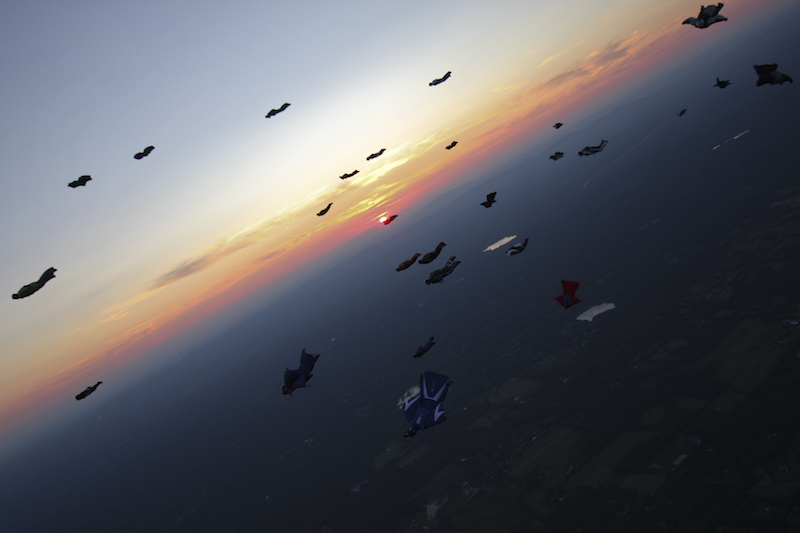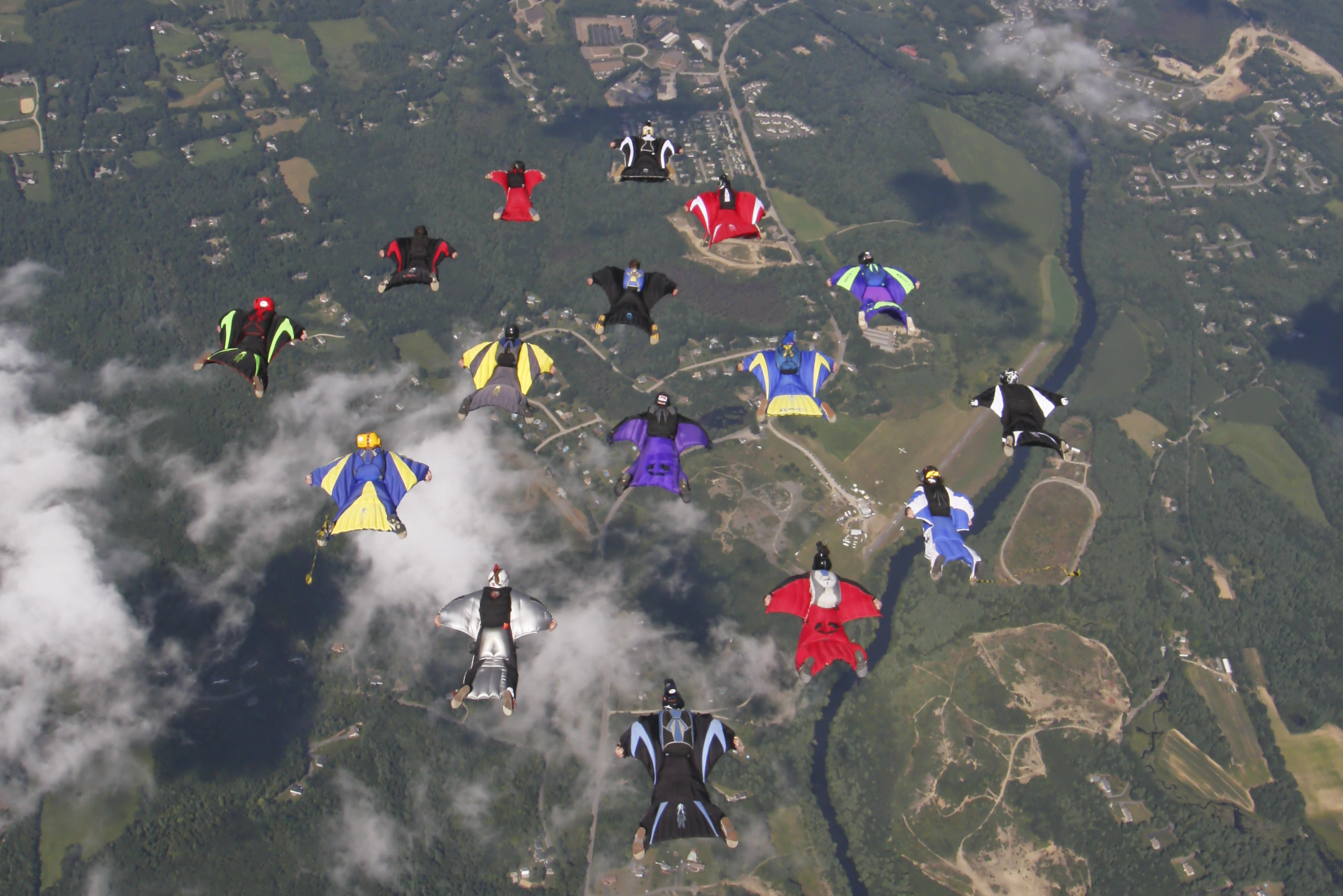Learn to Skydive with a Wingsuit: Top 5 Instructor Tips for Wannabe Flyers

So, you'd like to fly a wingsuit…
You’ve seen the footage on YouTube and are attracted by the concept of flying like a bird. If this is you––this post will give you some suggestions so you can get your skydiving skills down and be on your way to all things wingsuiting.

First of all... before you try and fly a wingsuit you've got to acquire solid skills in areas like exiting, freefall, and canopy piloting ability.
If you don't have a reasonable, practiced level of competency in these skills, jumping a wingsuit only further complicates your progress in these arenas.
But––there's some good news: the skill areas mentioned above can be focused on and practiced often as you accumulate the 200 jumps required to jump a wingsuit.
Here are 5 skydiving steps to focus on when prepping for wingsuiting prior to reaching your 200-jump minimum...
1) Exiting
The exit sets the tone for the entire skydive... Exit control when flying a wingsuit cannot be emphasized enough. Learn to exit from a variety of belly exits (poised, dive, floater), mastering presentation and heading control. Watching the plane as you exit with your head in a high attitude, looking up at the aircraft is how every good exit starts––especially when it comes to jumping with a wingsuit.
2) Body Flight and Tracking/Angle Fly (in small and large group skydiving)
The experience that you gain by learning to approach freefall formations and to fly relative with others (with both proximity and level control) will definitely accelerate your progression to “flock” or fly close to other wing suit skydivers. Learning to master both diving and tracking body positions are essential to group wingsuit jumps. There is no “launching together” (linked) on an exit. You must exit the aircraft solo diving to close distance to a flock formation. The easiest and best place to gain these skills is to become proficient in diving to and separating from freefall formations.
You can also further-develop your approach and diving skills by participating in tracking jumps or learning to backfly or “angle fly”. Tracking jumps and/or angle flying in particular are great alternate group activities to shape your skills towards becoming a wingsuit flyer.
For more on backfly and freefly practices – you can check out one of SDU's many instructional skydiving videos––Backfly: Learning to Freefly...
3) Wind Tunnel Training
Yes, wind tunnel training for wingsuit skills... The wind tunnel is a great tool to quickly refine your FS, backfly and “range of motion” skydiving exercises. The tunnel is effective for learning fall rate control, knee and leg awareness, backflying, and learning to narrow, widen, or crunch your knees. Being comfortable enough to bring your knees completely together (or to crunch the knees forward) are body positions used for both exiting and pulling. Never forget the power of some good ol' fashioned wind tunnel training.
4) Canopy Control
Learning to fly your parachute with precision and control to land consistently where you want is crucial. Understanding the flight characteristics of your canopy to have the ability to alter the glide of your parachute in off-wind line situations will help you land safely––on or off of the drop zone. Once you have learned to fly your canopy from any spot around the DZ, upwind, downwind, crosswind, etc., learning the best way to make it back from a long spot, you'll be much better prepared for learning to fly a wingsuit.
"On a normal jump, if you simply deploy a little late, you're still directly over where you jumped out of the aircraft from (minus wind drift), but in a wingsuit, just from breakoff to deployment altitude––you can fly far enough away in the wrong direction that you may have problems making it to your intended landing area. Your ability to get the most out of your parachute will help you greatly in making good decisions to find your way back to the airport safely on every jump."
5) Tracking Suit Jumps
Tracking Suits have evolved and come a long way. A tracking suit is a great warm-up to dovetail into wingsuit training. These suits really are "baby wingsuits" when you think about it. An initial wingsuit "First Flight" course is highly recommended before flying a tracking suit, due to the navigation and other differences in this type of jump vs. normal skydive. Tracking suits really give the new user a good idea of the difference in range to be expected to travel with good body position vs. a jump without an inflatable suit of some kind. Finding a qualified wingsuit coach to help with this transition is imperative to making good decisions.
If you can start your road to wingsuiting focusing on the 5 steps above, you'll find when you reach 200 jumps, you will have developed the foundation to enjoy and rapidly succeed as a straight-up Wing Suit Pilot.
Let us know when you're ready to start training, whether you have 3, 30, or 3,000 jumps, come see us at FlyteSkool at Skydive University in DeLand, Florida. Contact us today at 1-800-891-5867 – or for more information about wingsuit or track suit coaching (we rent suits!), Click Here.

Contact Skydive University (located in DeLand, FL at Skydive DeLand) at 1-800-891-5867 – or more information about wingsuit or track suit coaching (psst...we rent suits!), Click Here.

